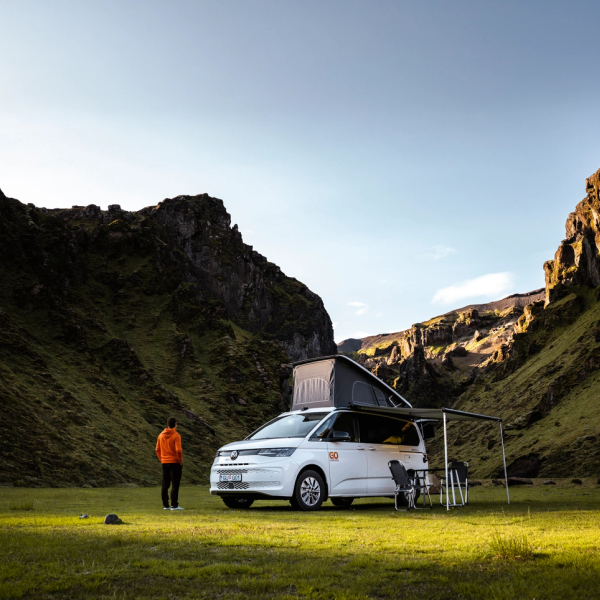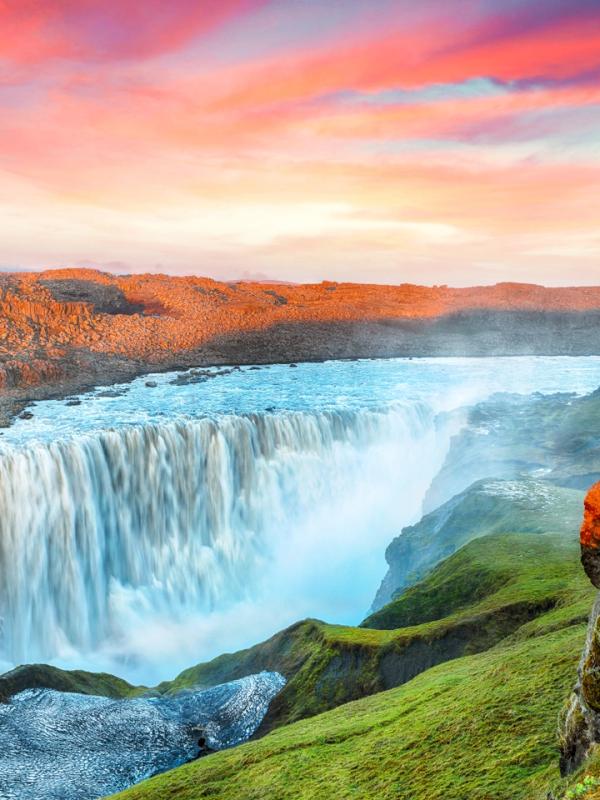
Dettifoss Guide: Iceland’s Most Powerful Waterfall
Dettifoss is Europe’s most powerful waterfall by volume, plunging 44 m into the wild Jökulsárgljúfur canyon. It’s not as easy to reach as Gullfoss, but its raw, thundering energy makes it a bucket-list stop in Iceland’s North.
Key Takeaways
- Height & flow: 44 m drop with average discharge of ~193 m³/s.
- Location: Northeast Iceland, accessible via Route 862 (west bank) or Route 864 (east bank).
- Best views: East bank offers dramatic vantage; west bank has safer paths and parking.
- Facilities: There are public toilets on the western side; the eastern side has no facilities at time of writing.
- Camping options: Mývatn area campgrounds ~45 km south offer services for camper-van travelers. Further north, there’s an excellent campsite at Ásbyrgi Canyon.
What’s Dettifoss?
Fed by glacial melt from Vatnajökull further to the south in the Highlands, Dettifoss is a huge waterfall that cascades down Jökulsárgljúfur canyon. With its sheer power, banded basalt walls, and spray-filled air, it’s a place that feels elemental, and is one of the most famous waterfalls in the entire country.
Dettifoss is also the biggest attraction in the northern territory of the Vatnajökull National Park, which doesn’t share any borders with the rest of the park. It’s one of the country’s most dramatic natural spectacles.
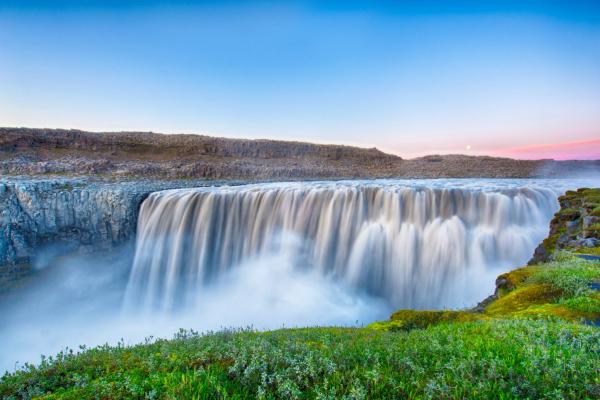
Why Visit Dettifoss?
Visiting Dettifoss delivers an experience of unbridled nature, and is a major highlight in Northern Iceland and for trips around the Ring Road. It’s somewhat remote as well, meaning that if you come in the early morning or later afternoon, crowds are minimal, and you can admire the waterfall in relative solitude.
Travelers should also visit Dettifoss for the impressive geology in this part of the country. The entire area is strewn with rocks, washed up here after eruptions underneath Vatnajökull unleashed powerful glacial floods. The canyon itself is the same: a beautiful example of the power of Iceland’s fire and ice.
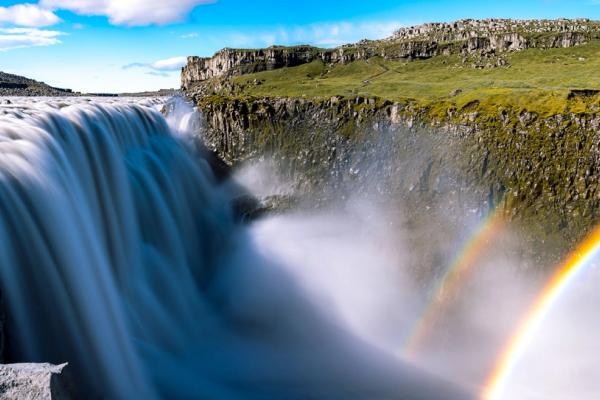
How Dettifoss Was Formed
Glacial floods and tectonic forces carved Jökulsárgljúfur canyon during the Ice Ages. Repeated glacial outbursts (jökulhlaups) chiseled basalt and shaped the landscape. Over millennia, the Jökulsá river’s relentless flow deepened the canyon and pushed water over the dramatic 44 m drop.
The river itself drains from the glacier Vatnajökull; it’s connected to the Bárðarbunga volcanic system underneath the ice, whose eruptions have historically sent huge surges of meltwater barreling down towards the coast via the river.
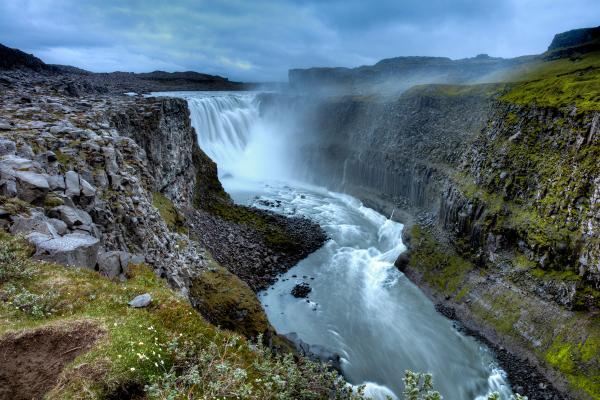
Facts About Dettifoss
Most travelers don't realize just how powerful Dettifoss is until they hear it before they even see it. With an average water flow of about 193 cubic meters per second, it’s the most powerful waterfall in Iceland, and the second in Europe. Standing at the edge, you’ll feel the ground subtly vibrate as water crashes into the canyon below, churning up a constant spray that often soaks visitors, even from a distance.
Dettifoss has also found fame beyond Iceland. Its otherworldly setting and sheer force made it the perfect opening shot for Ridley Scott’s Prometheus (2012), where it stood in for a primordial alien world. That appearance cemented its reputation as one of the most cinematic and alien landscapes on Earth.
The waterfall is accessible from both sides of the canyon, but each offers a different experience. The east bank gets you closer to the action, with a shorter walk and railings for safety, while the west bank is quieter and gives you a wider-angle perspective, but it involves a longer, rougher trail. Whichever you choose, the sense of scale and power remains unmatched.
Finally, the dramatic Jökulsárgljúfur canyon that Dettifoss plunges into wasn’t formed by ordinary river erosion. It was carved over time by massive glacial floods, some of the largest Iceland has ever seen, caused by subglacial eruptions from Bárðarbunga volcano under the Vatnajökull ice cap. These floods, known as jökulhlaups, reshaped the entire region thousands of years ago, leaving behind the steep-sided canyon and raw terrain you see today.
How to Get to Dettifoss
Dettifoss is relatively easy to access, as long as the weather is stable.
- From Reykjavík: It’s ~5–6 hours’ drive (450 km). Along the way, you can camp near Mývatn, Dettifoss’ best base.
- Roads: Route 862 is a paved road leading to the western side of the waterfall. In summer, it’s open unless there’s some bad weather; in winter, it isn’t serviced, so it is most often closed due to snow. Route 864 (east side) is a rough gravel road to reach the viewpoint; a longer drive but shorter walk.
- Parking & Access: Both banks have marked parking, and there are public toilets on the western side, which is the more “official” side. Walks to viewpoints range from 5 to 20 minutes. At the time of writing, both parking areas are free.
What to Do at Dettifoss
East-Bank Platform
This is the closest and most dramatic way to experience Dettifoss. From the small parking area at the end of Route 864, a short, relatively flat trail leads you straight to the canyon’s edge. You’ll get a head-on view of the waterfall, close enough to feel the spray and hear the roar echo through the gorge.
The path is rocky but manageable for most visitors, making it the more accessible option for families and those wanting a powerful photo opportunity without a long hike. Just be prepared to get a little wet – this side gets you up close to the action.
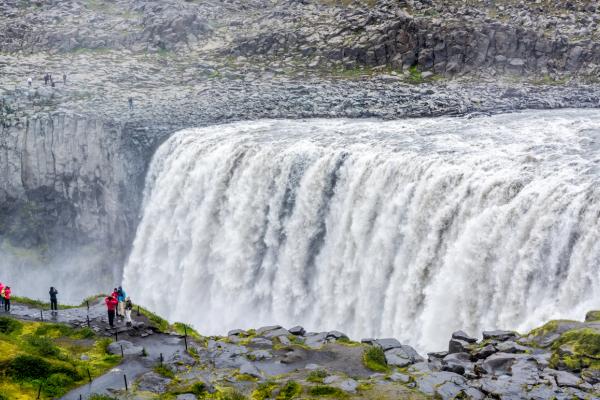
West-Bank Trail
If you prefer a quieter approach and a broader view of the canyon, head to the west bank via Route 862. From the parking lot, it’s about a 15–20-minute walk on a well-marked gravel trail to the main viewing platforms. The vantage point here is more elevated and slightly further from the waterfall, offering sweeping views of Dettifoss, the canyon, and the surrounding volcanic terrain.
Both sides also have walking trails that connect you from Dettifoss to another waterfall called Selfoss, a graceful, horseshoe-shaped waterfall that contrasts beautifully with Dettifoss’ brute force.
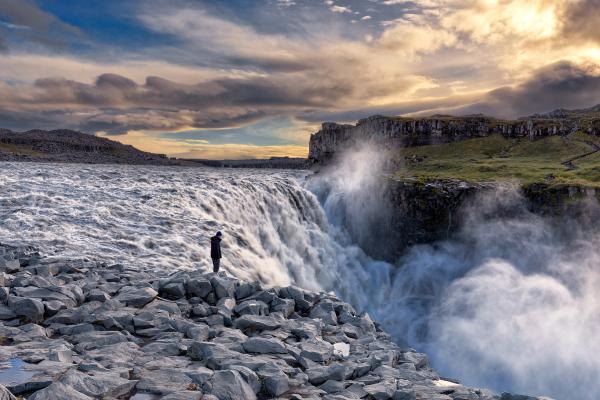
Nearby Camper-Van-Friendly Camping
The Mývatn region (~45 km south) offers several camper-van–friendly sites, or you can continue further north along the canyon to camp in the Húsavík area, where there are a few more options:
Vogar Travel Service
This is our recommendation for camping near Lake Mývatn, located about 45 minutes from Dettifoss. Here, there are basic facilities, hot-water showers, and a pizza restaurant for those who don’t feel like cooking. Also, nearby you can enjoy a soak in the Mývatn Nature Baths, northern Iceland’s answer to the Blue Lagoon.
Ásbyrgi Campsite
Run by the national park service in Iceland, the campsite at Ásbyrgi is one of our favorites in the entire country, with easy access to the area’s stunning hiking trails that trace the edge of the canyon.
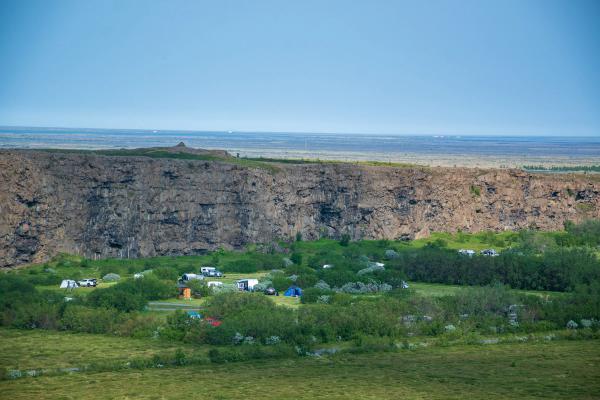
Camping 66.12 North
Further north at the tip of the peninsula east of Húsavík, this campsite is another fantastic choice for campers in the vicinity of Dettifoss. Campers set up in a huge field next to the ocean, offering unbeatable views over the water.
Húsavík Campsite
The campsite in Húsavík has been updated since so many bad reviews on Google – now, there’s a new shared building with hot showers, clean bathrooms, and a kitchen. You’re also close to the GeoSea Hot Spring, and easily positioned for whale watching tours that depart from the harbor.
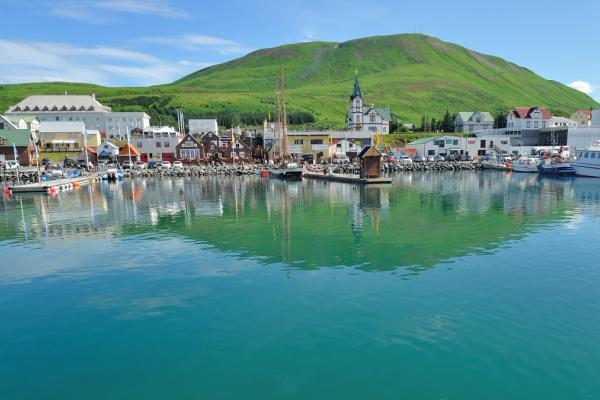
What Else to See in the Area
Dettifoss is a key stop along the Diamond Circle, a spectacular driving route through North Iceland that connects some of the region’s most dramatic and diverse natural sights. If you’re visiting Dettifoss, you’re perfectly positioned to explore other unforgettable spots nearby, many of which can be experienced over a couple of days in a campervan.
Ásbyrgi Canyon
To the north, Ásbyrgi Canyon offers one of Iceland’s most unique geological formations: a massive horseshoe-shaped amphitheater carved by glacial flooding. Steep cliffs line the canyon’s rim, enclosing a peaceful forested valley with well-marked hiking trails and a serene lake at the far end. Ásbyrgi is around 50 kilometers north of Dettifoss and feels like a complete contrast—lush, sheltered, and quiet compared to the raw force of the waterfall.
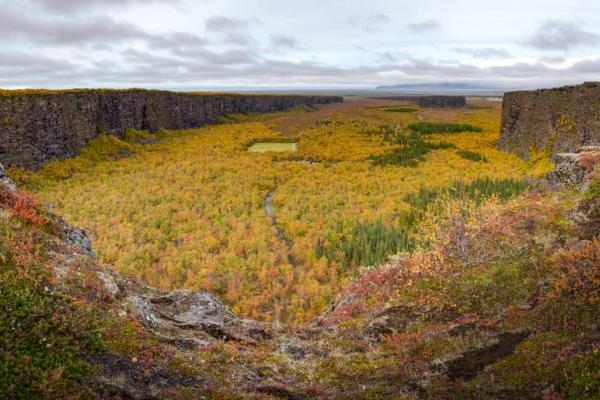
Goðafoss Waterfall
To the west lies Goðafoss, the so-called “Waterfall of the Gods,” named after the moment when Iceland's law speaker threw Norse idols into the falls to mark the country’s conversion to Christianity. Though smaller than Dettifoss, Goðafoss is stunningly beautiful, especially when lit by the low light of evening or early morning. It’s a great place to pause if you’re continuing west toward Akureyri.
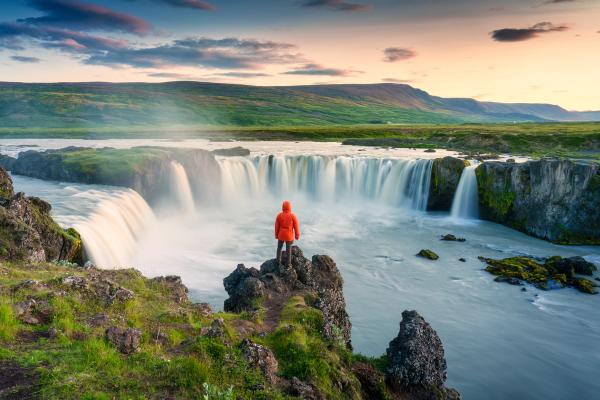
Lake Mývatn
Closer to Dettifoss, the Lake Mývatn area offers a rich concentration of geological and geothermal wonders. Just 45–60 minutes south of the waterfall, this region is full of craters, lava formations, bubbling mud pools, and hiking trails. The Mývatn Nature Baths are a favorite spot to soak after a long day on the road.
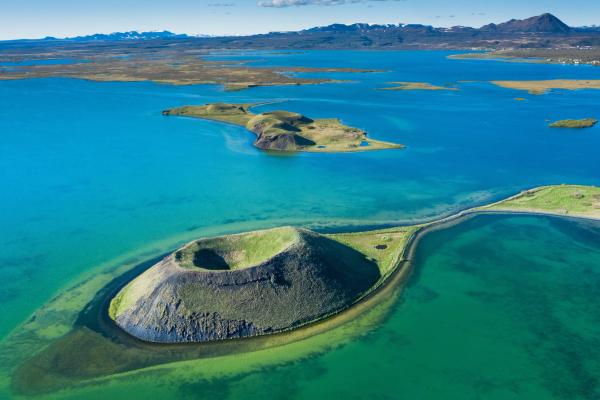
Krafla Volcano
Not far from Mývatn, the Krafla volcanic system is another standout. This active caldera has been the site of eruptions as recently as the 1980s and is home to vivid geothermal fields and the turquoise crater lake Víti. Short trails let you explore steaming vents, colorful mineral deposits, and the stark, otherworldly terrain that makes this part of Iceland so special.
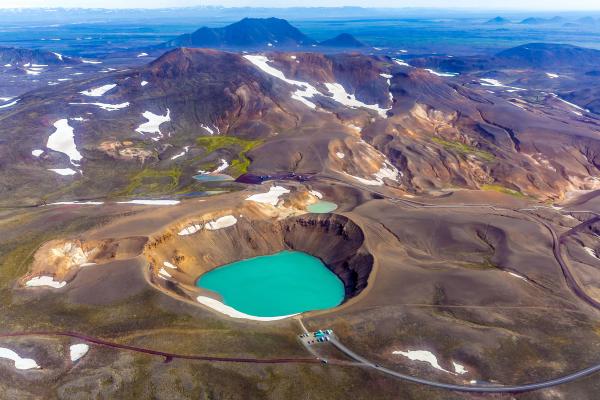
Planning Tips for Your Visit
Dettifoss might be remote, but it still sees a fair number of visitors in the summer months, especially as part of the popular Diamond Circle route. A little advance planning can go a long way toward making your experience more enjoyable, safer, and more rewarding.
Timing: If you want to enjoy the waterfall with fewer people around, aim to visit early in the morning or later in the evening. Tour groups often arrive midday, and even though this part of Iceland is less busy than the south, the upper parking lots can fill quickly in peak season. Sunrise and sunset hours also offer better light for photography and a more atmospheric encounter with the falls.
Footwear: The trails to Dettifoss aren’t paved, and the terrain is rugged. Expect uneven rocks, loose gravel, and mud, especially after rain. Solid hiking boots with good ankle support are highly recommended, even if you're just walking from the parking lot to the viewing areas. Flip-flops and sneakers won't cut it.
Gear: Weather in North Iceland changes quickly. Bring a waterproof jacket and layers that can handle wind and rain. A warm hat and gloves aren’t a bad idea either—even in summer. If you're planning to take photos, pack a lens cloth or microfiber towel. The spray from Dettifoss can soak your gear in seconds, especially on the east side.
Safety: Dettifoss is wild and untamed. There are minimal safety railings – especially on the east bank – and some trails run close to steep canyon edges. Keep a close eye on children and avoid stepping off marked paths. In winter or wet conditions, trails can become slippery, and extra caution is essential. Always check the latest weather and trail updates before setting out.
Taking a bit of extra care and coming prepared will let you fully enjoy the raw, roaring power of Iceland’s most intense waterfall.

Iceland’s Most Powerful Waterfall
Dettifoss may be off the beaten path, but its raw, explosive beauty is unmatched. Whether you’re road-tripping the Diamond Circle or detouring from Mývatn, it’s a definite highlight of any road trip in Iceland and worth visiting. Pair it with other North-Iceland wonders like Mývatn or Goðafoss for an unforgettable highland adventure.

